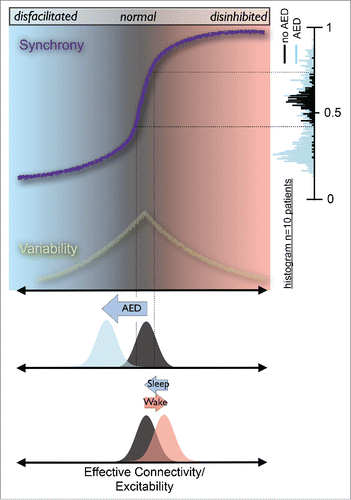Figures & data
Figure 1. Increasing evidence from computationalCitation1, cell cultureCitation2 and humanCitation3 studies suggests a close link between cortical network synchrony and effective connectivity. As connectivity, or more generally excitability, is increased, network synchrony increases rapidly (schematically depicted by purple line). Long-term monitoring indicates that human cortical networks reside in the vicinity of this synchronization transition (black histogram) whereas AED, on average, shift networks toward lower synchrony (blue histogram). The link between synchrony and excitability allows an approximate mapping of these synchronization changes to excitability (black dotted lines). AEDs shift cortical excitability to lower levels. Conversely, wake moves cortical networks to higher excitability (and synchrony) which is recovered by sleep.

